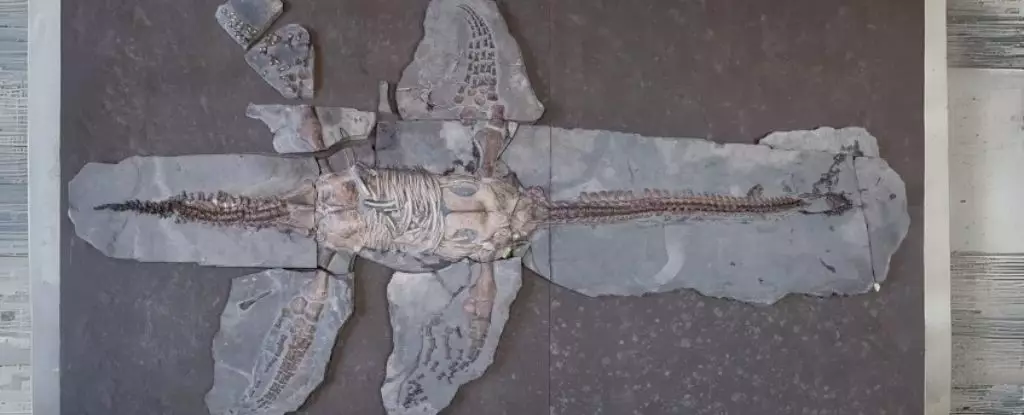During the Mesozoic era, a diverse range of marine reptiles thrived in the oceans, among which the plesiosaurs stood out as remarkable predators. With their elongated necks and robust bodies, these creatures were uniquely adapted to their aquatic environments, allowing them to catch prey with efficiency and grace. Recent discoveries of well-preserved fossils have shed light on the physical characteristics of various plesiosaur species, offering new insights into their evolutionary biology and ecological adaptations that facilitated their success in the Jurassic seas.
The recent work conducted by paleontologists, including Miguel Marx from Lund University, illustrates a significant breakthrough in understanding plesiosaur anatomy. The fossil in question, designated MH 7, was unearthed from Holzmaden, Germany, and dated back approximately 183 million years to the Jurassic period. Analysis of this specimen revealed distinct features related to soft tissues — particularly the discovery of flipper scales akin to those found in modern sea turtles. This finding challenges previous notions about plesiosaur skin and raises questions about their ecological adaptations and lifestyle.
Fossils typically consist of hard mineralized parts, yet MH 7 stands out due to the detailed preservation of its soft tissues, which researchers utilized modern analytical techniques, such as microscopy and spectroscopy, to obtain a comprehensive understanding of its physical appearance. This combination of ancient fossil analysis and advanced technology has unlocked new details about the hydrodynamic adaptations of plesiosaurs, enhancing our understanding of their adaptation to aquatic life.
One of the most exciting revelations from the research pertains to the unique structure of the plesiosaur’s flippers. Previously thought to be smooth and devoid of scales, the flippers of MH 7 exhibited small, triangular scales which resemble the carapace scutes of contemporary sea turtles. The resemblance casts light on the evolutionary pressures that may have nudged plesiosaurs towards developing similar traits, possibly as adaptations to both swimming and ground mobility.
The implications of these flipper scales extend beyond mere aesthetics. They may have provided essential traction as plesiosaurs navigated the seafloor, especially when foraging for benthic prey like snails and crustaceans. The presence of these scales aligns with evidence of ‘bottom-walking’ behavior, suggesting that plesiosaurs were not exclusively pelagic dwellers but also engaged in benthic feeding strategies. This adaptability might have played a crucial role in their ecological success over millions of years.
Another intriguing aspect of plesiosaur biology relates to their reproductive and respiratory strategies. Evidence suggests these creatures bore live young and were capable of breathing air, a trait commonly associated with warm-blooded animals. The smooth skin on the tail of MH 7, contrasted with the scaled and potentially more robust fore flipper, suggests adaptations that may indicate a degree of thermoregulation, allowing plesiosaurs to thrive in various marine environments.
Unlike other marine reptiles of their time, such as ichthyosaurs, which lost their scales as an adaptation to reduce hydrodynamic drag, plesiosaurs seemingly kept their reptilian scales intact after evolving to a fully aquatic lifestyle. This is a notable divergence in evolutionary strategy and raises further questions about the ecological niches occupied by these two groups of marine reptiles.
The continued study of plesiosaur fossils and their anatomical features not only enriches our understanding of these ancient predators but also illustrates the dynamic evolutionary paths taken by marine reptiles. The intricate relationship between their physical traits and lifestyle adaptations provides a fascinating glimpse into the past. As research methodologies advance, the potential to uncover more about the coexistence and competition of prehistoric marine life becomes increasingly promising. Future studies are likely to focus on broader ecological contexts, comparing plesiosaur adaptations to those of other contemporaneous marine fauna, thereby further illuminating the complexities of Mesozoic marine ecosystems.

Leave a Reply